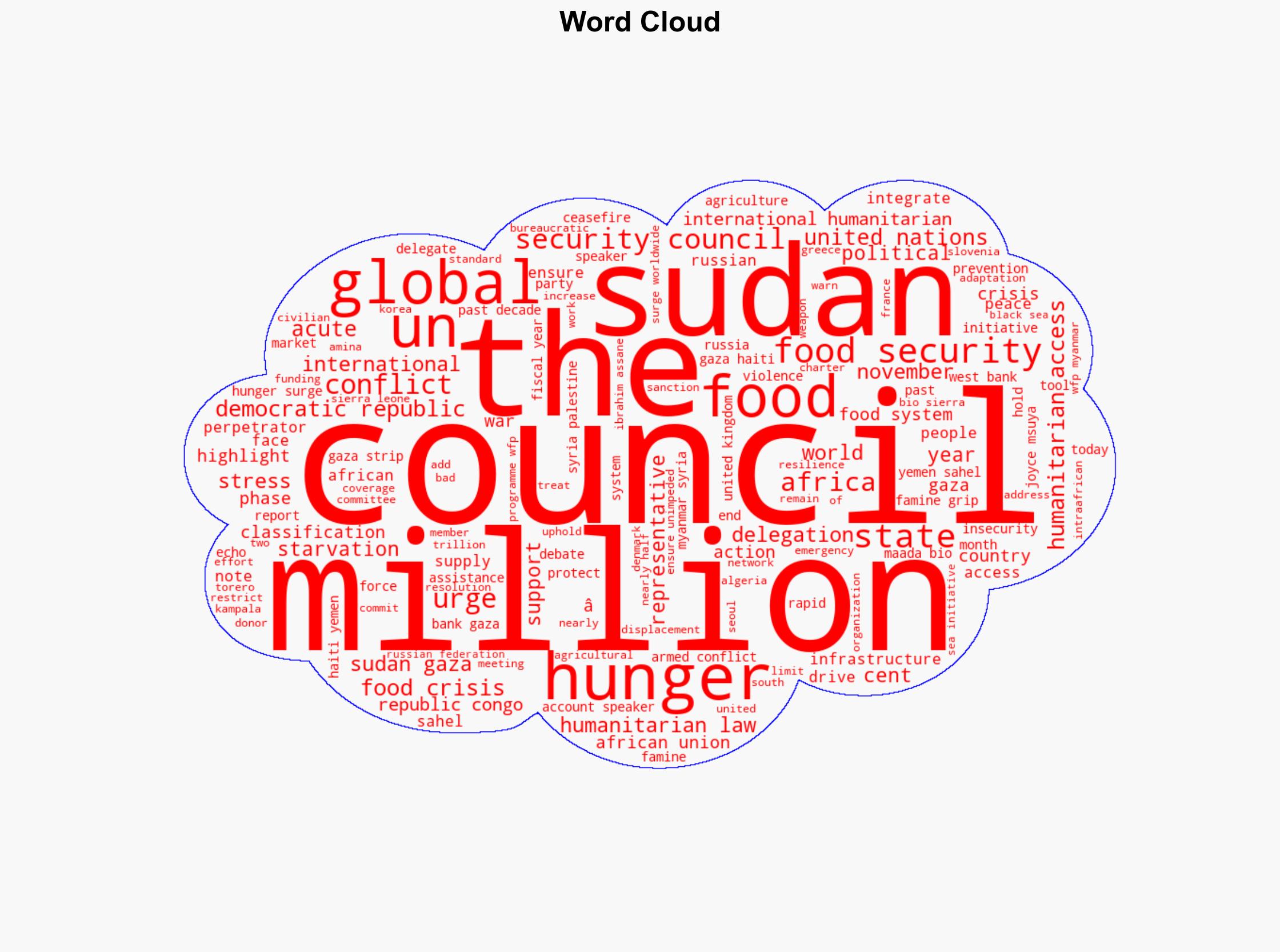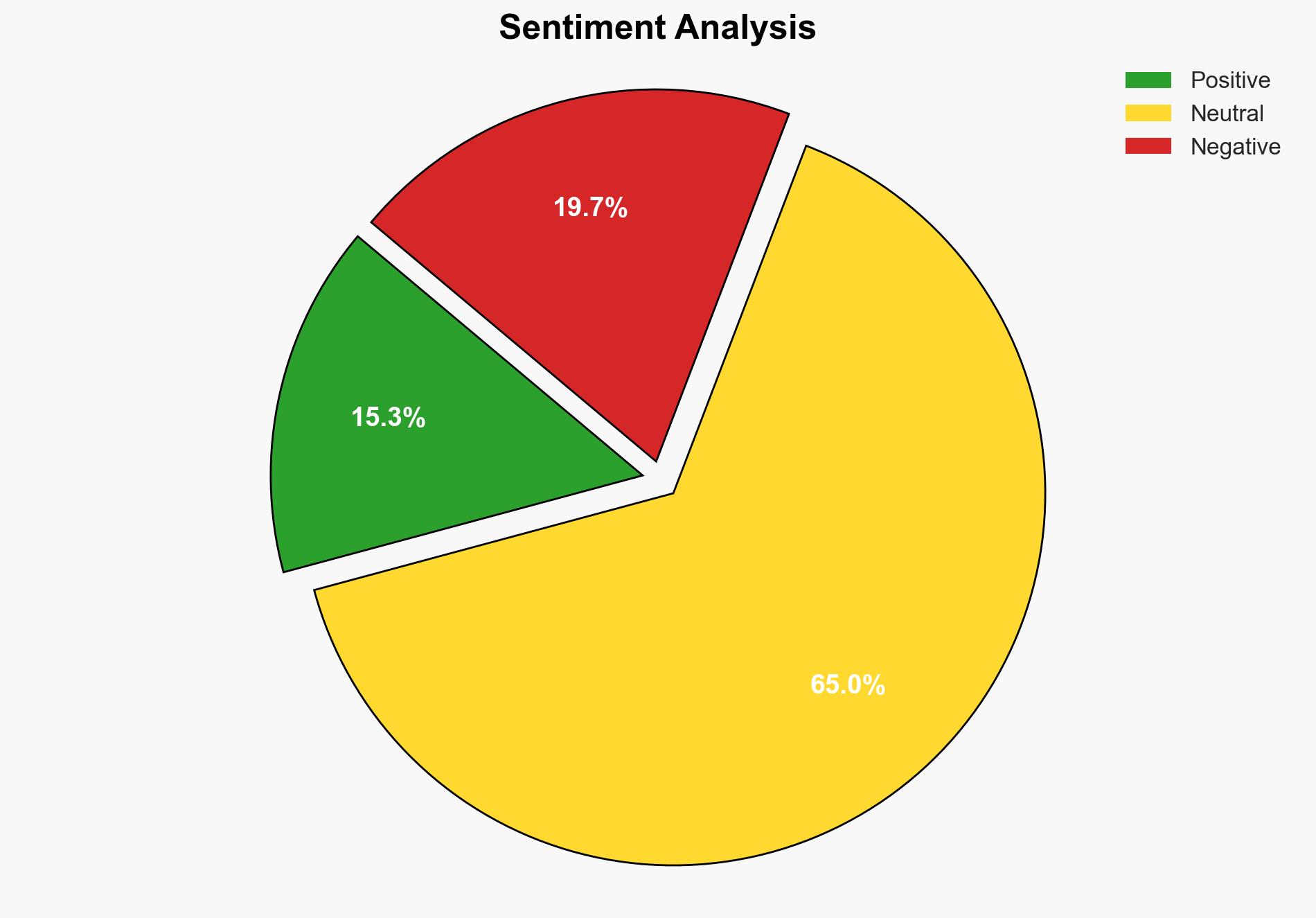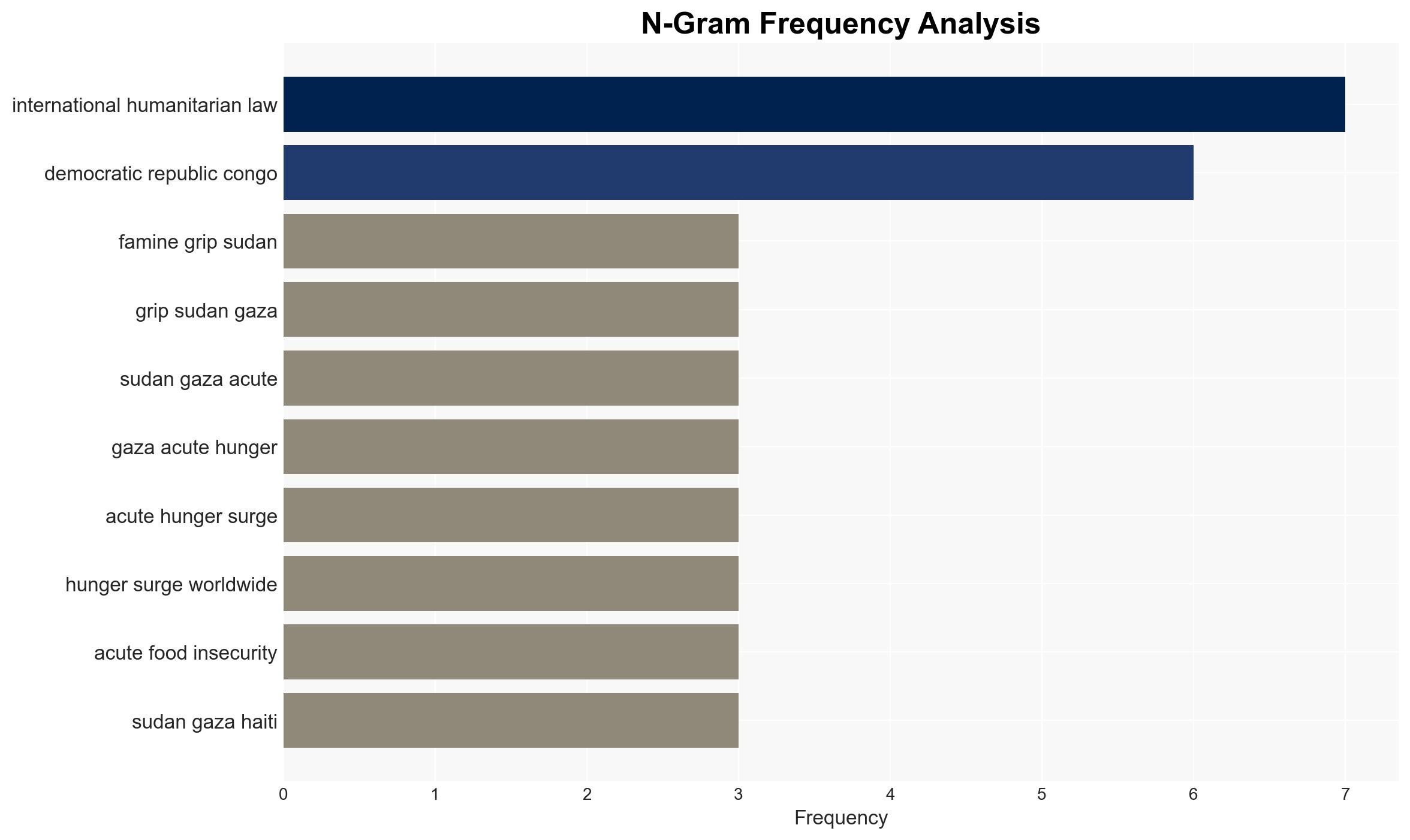Stop Using Starvation as War Weapon Hold Perpetrators to Account Speakers Urge Security Council as Famine Grips Sudan Gaza Acute Hunger Surges Worldwide – Globalsecurity.org
Published on: 2025-11-18
AI-powered OSINT brief from verified open sources. Automated NLP signal extraction with human verification. See our Methodology and Why WorldWideWatchers.
Intelligence Report:
1. BLUF (Bottom Line Up Front)
There is a moderate confidence level that the use of starvation as a weapon in conflict zones like Sudan and Gaza is primarily driven by deliberate military strategies rather than collateral damage from conflict. The recommended action is for the international community, led by the United Nations, to enhance enforcement mechanisms for international humanitarian law and to support initiatives aimed at building resilient food systems in conflict-prone regions.
2. Competing Hypotheses
Hypothesis 1: Starvation is being used as a deliberate weapon of war by conflicting parties in regions such as Sudan and Gaza to weaken opposition and control populations.
Hypothesis 2: The acute hunger and famine conditions in these regions are primarily the result of collateral damage from ongoing conflicts, such as infrastructure destruction and restricted humanitarian access, rather than intentional strategies.
The evidence supports Hypothesis 1 more strongly due to reports of systematic obstruction of humanitarian aid and targeted destruction of food systems, which suggest intentionality beyond mere collateral damage.
3. Key Assumptions and Red Flags
Assumptions: It is assumed that all parties involved in the conflict have equal capacity and intent to use starvation as a weapon. This may not account for varying strategic objectives and capabilities.
Red Flags: The lack of transparent reporting from conflict zones and potential bias in sources could skew the understanding of the situation. Additionally, the political motivations of reporting entities may influence the narrative.
4. Implications and Strategic Risks
The deliberate use of starvation as a weapon could exacerbate regional instability, leading to increased displacement and migration, further straining neighboring countries. Politically, it may lead to international condemnation and sanctions, potentially escalating conflicts. Economically, prolonged instability could deter investment and development, worsening the humanitarian situation.
5. Recommendations and Outlook
- Actionable Steps: Strengthen international monitoring and reporting mechanisms to ensure accountability. Increase diplomatic efforts to negotiate ceasefires and facilitate humanitarian access. Invest in building resilient local food systems.
- Best-case Scenario: Successful international intervention leads to ceasefires and improved humanitarian access, reducing famine conditions.
- Worst-case Scenario: Continued use of starvation as a weapon leads to widespread famine, increased displacement, and regional destabilization.
- Most-likely Scenario: Partial improvements in humanitarian access with ongoing challenges in fully addressing the root causes of food insecurity due to political complexities.
6. Key Individuals and Entities
Amina Mohammed (Deputy Secretary-General, United Nations), Joyce Msuya (Assistant Secretary-General for Humanitarian Affairs), Torero (Chief Economist, Food and Agriculture Organization of the United Nations).
7. Thematic Tags
Regional Focus, Regional Focus: Sudan, Gaza, Yemen, Sahel, Democratic Republic of Congo
Structured Analytic Techniques Applied
- Causal Layered Analysis (CLA): Analyze events across surface happenings, systems, worldviews, and myths.
- Cross-Impact Simulation: Model ripple effects across neighboring states, conflicts, or economic dependencies.
- Scenario Generation: Explore divergent futures under varying assumptions to identify plausible paths.
- Network Influence Mapping: Map influence relationships to assess actor impact.
Explore more:
Regional Focus Briefs ·
Daily Summary ·
Support us





